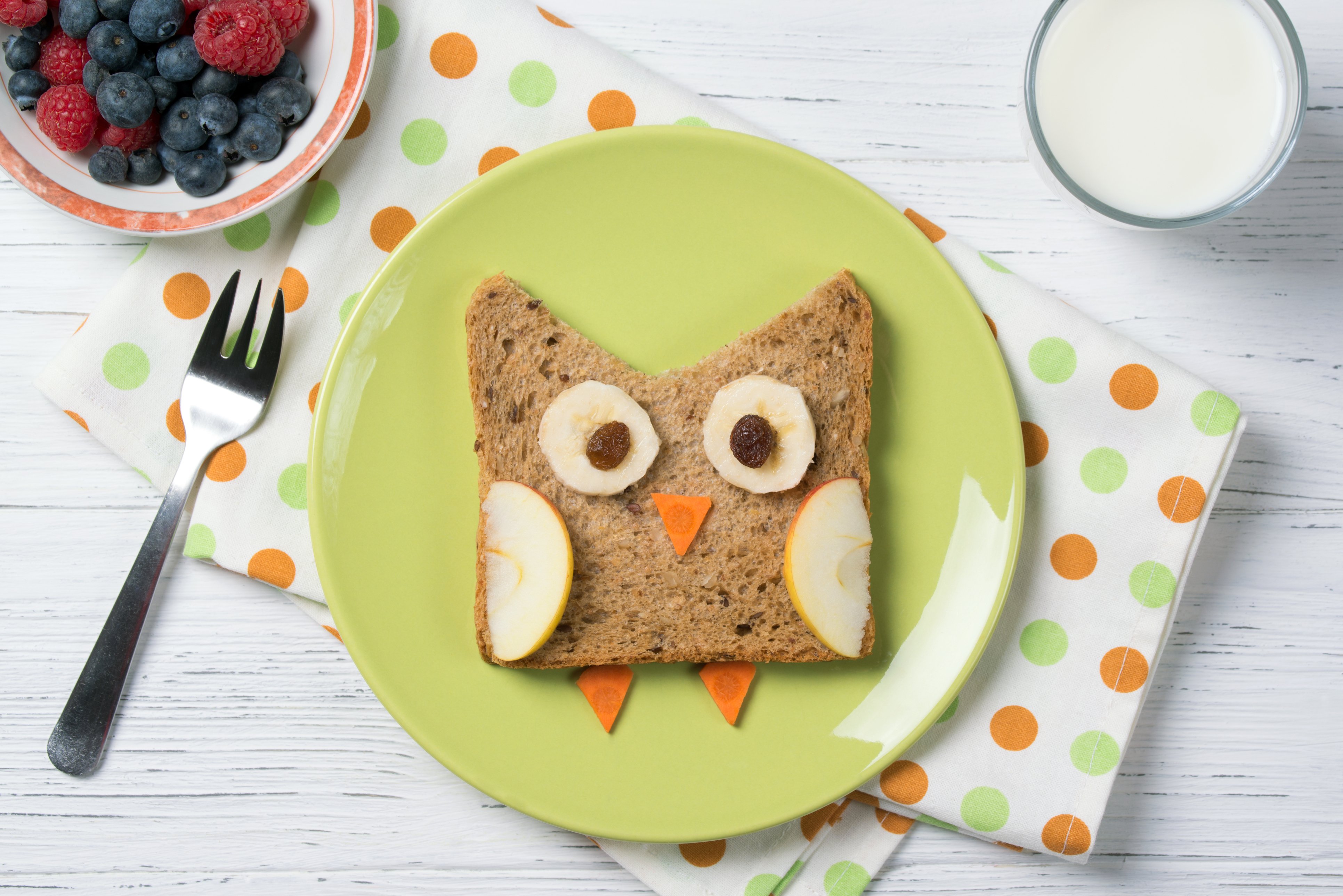Involving children of all ages in household activities will help them learn life skills. Involving them in the kitchen creates family bonds and teaches healthy habits.
Meal planning
Involving your child in weekly food and menu tasks is a way to get them interested in healthy food. As your school-age child develops reading and number skills, they can play a greater role in meal planning. Try to include a favourite fruit or vegetable or a preferred dish into at least one meal each week to encourage your child's enthusiasm. Children tend to eat better when they have a say, no matter how small, in family meals.
Magazines, websites and child-friendly cookbooks with pictures and clear instructions can help give ideas for simple recipes.
Grocery shopping
Taking your child grocery shopping will help them to feel they play an important role in planning family meals. They will learn food groups, learn to tell apart good quality produce from bad, and gain number skills by counting fruit and vegetables. Older children can benefit from grocery shopping trips by learning how to read food product labels.
Children can help bag food at the check-out, carry the bags and organize the food in your home. This will help children make closer connections between what is for sale in the store and what is served on their plates.
Safety and limiting waste
Use safe food handling techniques in the kitchen and at the grocery store. Delegate tasks that are appropriate for your child's age.
Food and kitchen safety tips
- Wash hands with warm soapy water before handling food.
- Clean surfaces with warm soapy water and a dishcloth before and after preparing food.
- Cut and prepare raw meat, fish, and poultry on a separate cutting board from that used for other foods.
- Refrigerate perishables (foods that may go bad) such as dairy products at a safe temperature of 4 °C (39.2 °F).
- Be aware of product expiry dates and teach your children to cycle products. This means using older items first and newer items later to limit waste.
Food preparation
Involving children in mealtime tasks does not have to mean a lot of work or mess. Assign jobs they can do on their own, depending on their age and skills. Younger children can scrub fresh vegetables, tear lettuce leaves and bring ingredients from one place to another. Older school-age children can practice basic math and science skills by measuring and counting ingredients.
Allow your tweens and teens to prepare some meals, their school lunches and snacks. This encourages independence and teaches them concepts and skills they will use throughout their life.
Clean up
Encourage your child to take part in cleaning up after a meal. Your child could clear the table, store leftovers, wash and dry dishes, or sweep the floor. Working as a team and dividing tasks can help get the job done more quickly.
Eating at home
- Use Canada's Food Guide to help you plan and prepare meals and snacks with help from all family members.
- Encourage your tween or teen to always eat breakfast. It helps enhance their performance throughout the day. Prepare easy breakfasts for busy mornings such as a breakfast burrito or fruit smoothie.
- At home, have snacks such as washed vegetables, fruit or cheese and crackers readily available.
- Involve your tween or teen in preparing meals and include some of their favourite foods in meals when possible.
- Encourage the entire family to eat together and make mealtimes enjoyable.
The information below has some ideas to help you plan and prepare meals and snacks that can fit in to your tween's or teen's regimen.
Day 1
Breakfast ideas: Toast with peanut butter, apple, milk
Lunch ideas: Tuna salad on whole wheat bread, veggie sticks (carrots, celery), water
Dinner ideas: Lasagna, mixed bean salad, orange juice
Snack ideas: Cheese and crackers, fruit salad
Day 2
Breakfast ideas: Banana strawberry smoothie, mixed nuts
Lunch ideas: Pasta salad with mixed veggies, yogurt, apple juice
Dinner ideas: Roast chicken and steamed rice, steamed vegetables, water
Snack ideas: Veggie sticks, crackers
Day 3
Breakfast ideas: Cold cereal with milk, apple
Lunch ideas: Veggie sandwich with hummus and whole wheat bread, banana, water
Dinner ideas: Stir fry (chicken and mixed veggies), green leaf salad, water
Snack ideas: Fresh/canned peaches, crackers and hummus
Day 4
Breakfast ideas: Breakfast wrap (whole wheat tortilla, cheese, and veggies), orange juice
Lunch ideas: Pita pizza (veggies, cheese, sauce), veggie sticks (carrots, celery), water
Dinner ideas: Grilled fish with steamed rice, steamed vegetables, apple juice
Snack ideas: Oatmeal cookie, yogurt with berries
Day 5
Breakfast ideas: Yogurt parfait (yogurt, strawberries and granola or bran cereal), whole wheat toast, milk
Lunch ideas: Salad with chicken, crackers and cheese, water
Dinner ideas: Chicken/beef fajitas with mixed veggies and whole wheat tortillas, milk or water
Snack ideas: Cheese and crackers, veggie sticks

